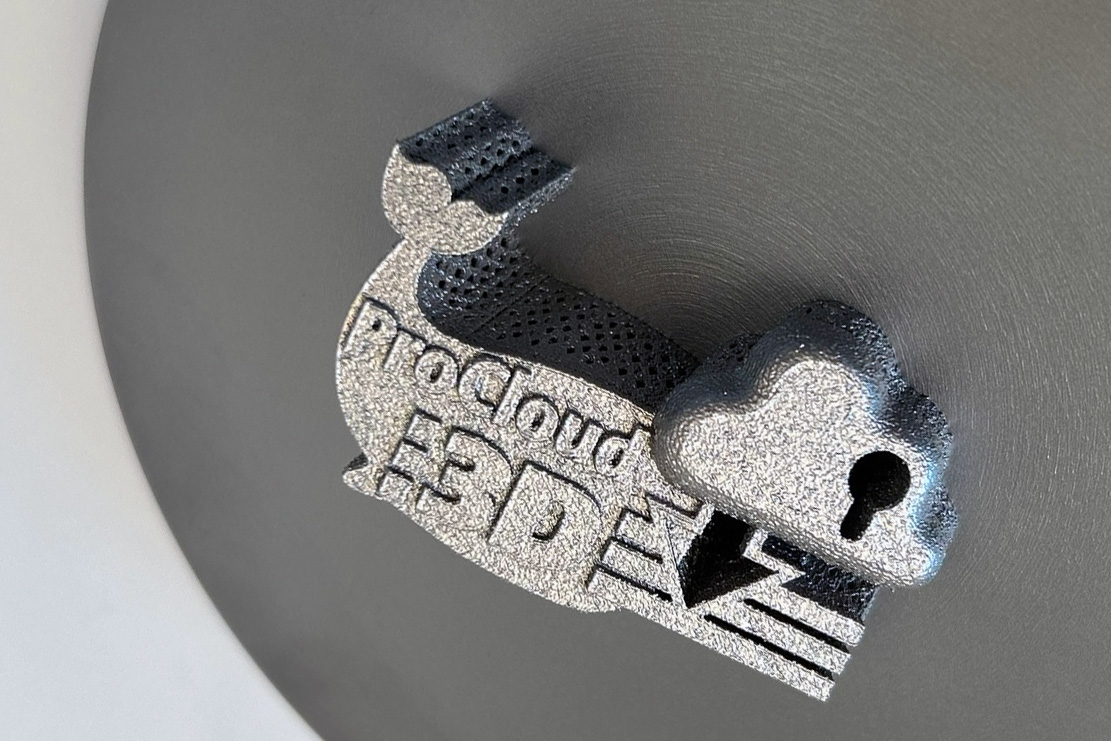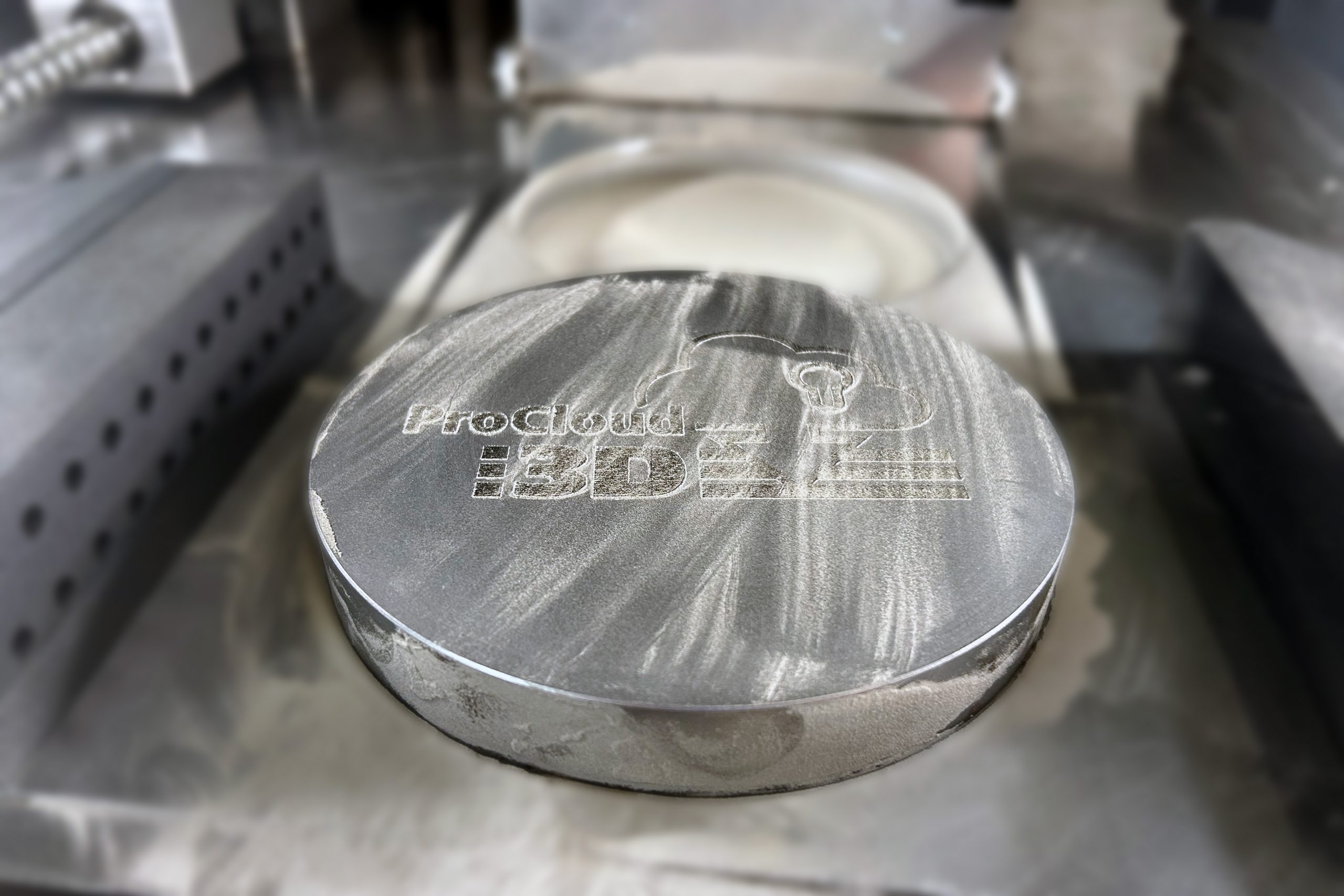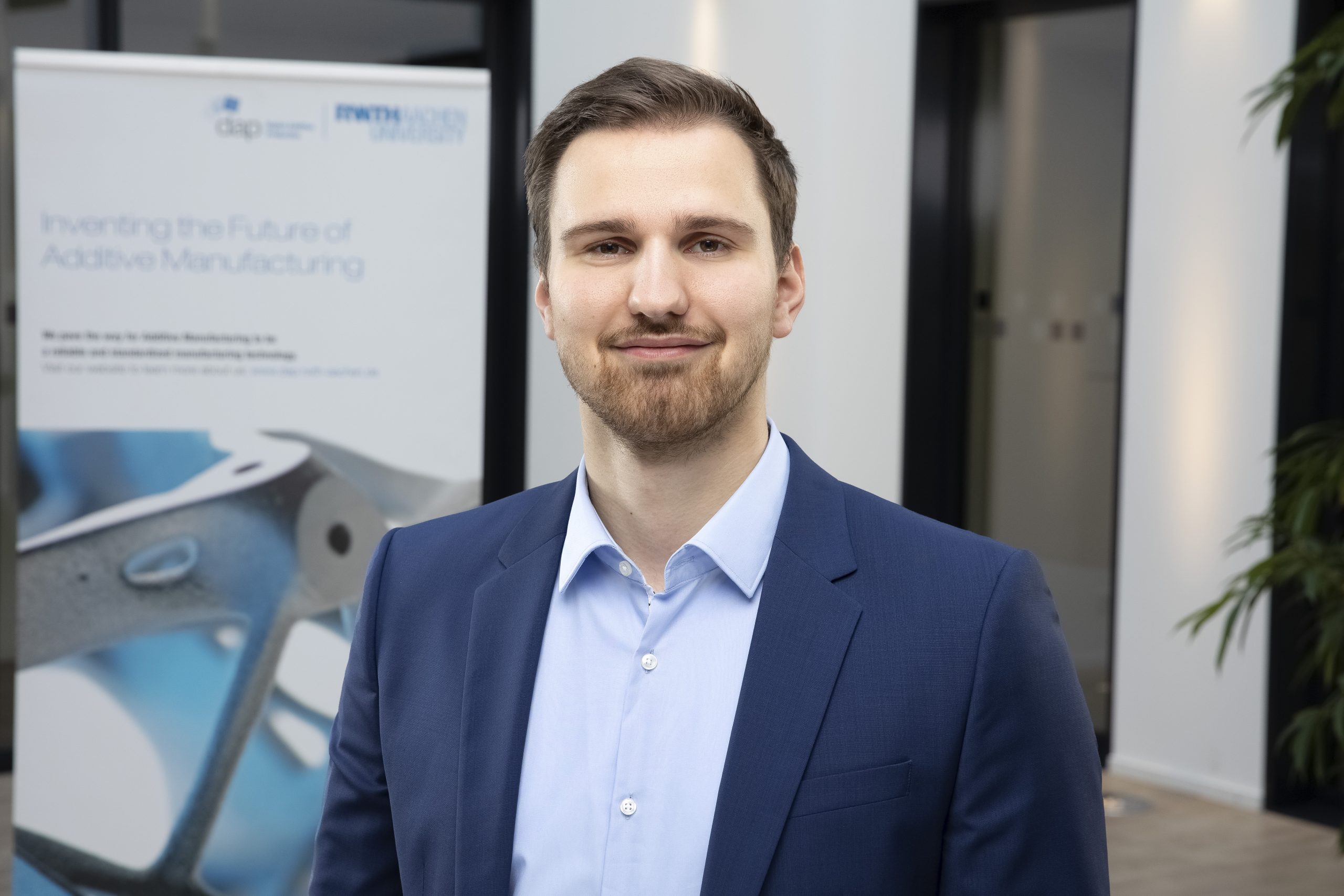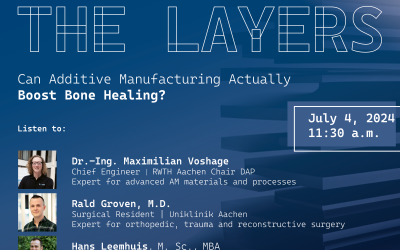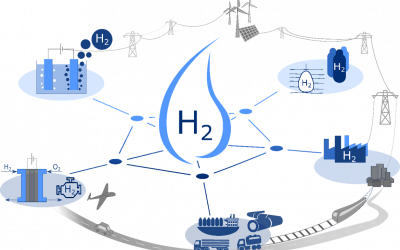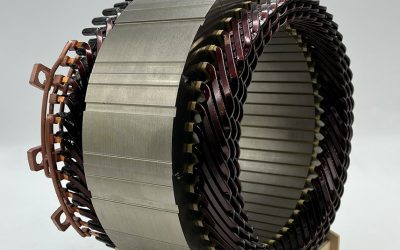Press Release, March 20th 2024
ProCloud3D: Developing a Cloud-Based Platform for Secure Decentralized Additive Manufacturing
Industrial Metaverse, Smart Services, Digitalization: Mega trends in the manufacturing industry into which additive manufacturing seamlessly integrates, transforming digital models into physical components. A key function in efficiently implementing these concepts is the cloud. It offers the essential infrastructure needed for processing, storing, and securely sharing data in real time, irrespective of location. The consortium behind the ProCloud3D project has made this infrastructure securely accessible for Additive Manufacturing.
Security: The Bottleneck of Decentralized Production
From the end users’ perspective, the additive manufacturing of components is increasingly being outsourced. To manufacture these components, the end user must share their design data with a service provider. Given that a digital design model is all that is needed to produce a physical copy, securing this process is crucial. The solution involves transferring production data layer by layer directly to the service provider’s PBF machines during the printing process, a method also known as streaming. However, it is crucial to ensure that this data cannot be intercepted, compromised, or manipulated, and that only the requested number of components is produced. Furthermore, the data for a manufacturing order must be meticulously compiled and prepared for the production process.
Development Approach of the ProCloud3D Platform
Against this backdrop, the researchers initially developed a slicer for the real-time generation of machine control code from the construction job information. The architecture of the ProCloud3D platform, for this purpose, is fundamentally based on the Open Vector Format, developed by researchers from the DAP Chair and the Fraunhofer Institute for Laser Technology ILT. The format supports, among other things, the flexible control of lasers with galvanometer scanners, the management of multiple scan field arrays, and the expansion of additional machine axis controls. Building on the OVF, a streaming protocol was developed that ensures efficient real-time transport of PBF-LB production data and relevant metadata for various PBF machines. The protocol includes both secure data transport and data encryption. With a high-performance nester developed by DAP, manufacturing jobs consisting of multiple components can be automatically generated. In a cloud-based user interface, the functionalities are fully integrated and visualized. Part of this solution is digital rights management along the depicted supply and process chain. The data streams are end-to-end encrypted. Hardware-wise, a project-developed machine interface processes the layer-wise control commands from the cloud. The streaming protocol defines who gets access to the data and in what quantity the ordered components are allowed to be manufactured.
We have a Stream!
Utilizing this developed cloud solution, the consortium successfully manufactured a demonstrator via the secure stream (refer to Image 1 and 2). The next step involves preparing the cloud-based platform for mass-market adoption in decentralized additive manufacturing. The developed hardware interface will be made compatible with various equipment manufacturers. Furthermore, access to a universally applicable cloud-based software service tailored for manufacturer-specific PBF-LB/M shall be provided.
The developed cloud solution is designed to offer companies across different industries a groundbreaking opportunity: By outsourcing their manufacturing processes to a specially designed secure cloud-based platform, these companies can directly tap into the potential of additive manufacturing. This approach eliminates the need for the high investments in PBF machines and the extensive development of specialized process know-how previously necessary. This solution acts as a catalyst for the adoption of Additive Manufacturing, enabling companies to digitalize and outsource their production in an efficient and secure manner.
The Project Consortium:
• WIBU-Systems AG
• LMI – Laser Melting Innovations GmbH & Co. KG
• RWTH Aachen Lehrstuhl Digital Additive Production DAP
• Beijing University of Technology
• BLT: Xi’an Bright Laser Technologies Co., Ltd.
• Nanjing 1001 automation technology co. LTD.
• Beijing aerospace smart manufacturing technology development Co., Ltd.
This research and development project is funded by the Federal Ministry of Education and Research (BMBF) under the program „Innovationen für die Produktion, Dienstleistung und Arbeit von morgen“ (funding code 02P18X010) and is managed by the Project Management Agency Karlsruhe (PTKA).
Image 1: Logo of the ProCloud3D project manufactured via stream through the developed cloud-based platform.
© RWTH DAP.
Directly from the facility: Another logo variant of the ProCloud3D project manufactured via stream using the developed cloud-based platform.
© RWTH DAP.
Moritz Kolter, M. Sc.
RWTH Aachen Chair
Digital Additive Production DAP
Chief Engineer Digital Product & Production
Campus-Boulevard 73
52074 Aachen
Further News
Sign Up, Grab Your Headphones and Tune into Our Audio Event
Attention, Innovators! Join Our Brand New Networking Format: Between the Layers Second Episode: Can Additive Manufacturing Actually Boost Bone Healing? JULY 4TH, 2024 | 11:30 A.M. (CET) | LINKEDINOUR GUESTS: RALD GROVEN | UNIKLINIK AACHEN & HANS LEEMHUIS |...
3rd Aachen Hydrogen Colloquium
Take your Chance! The 3rd Aachen Hydrogen Colloquium, hosted by the Zukunftscluster Wasserstoff, is just around the corner! Mark your calendars for Wednesday, May 15th, as our expert Stephan Koss will be giving a presentation on "Laser Cladded Metallic Coatings as a...
E-Motor Study: PEM and Partners Produce Stator Demonstrator
Press Release PEM RWTH Aachen, April 11th 2024 E-Motor Study: PEM and Partners Produce Stator DemonstratorWith numerous partners from industry, the Chair of Production Engineering of E-Mobility Components (PEM) of RWTH Aachen University has achieved the first goal of...
This picture shows a component that was developed in one of our projects together with Kueppers Solutions GmbH.

